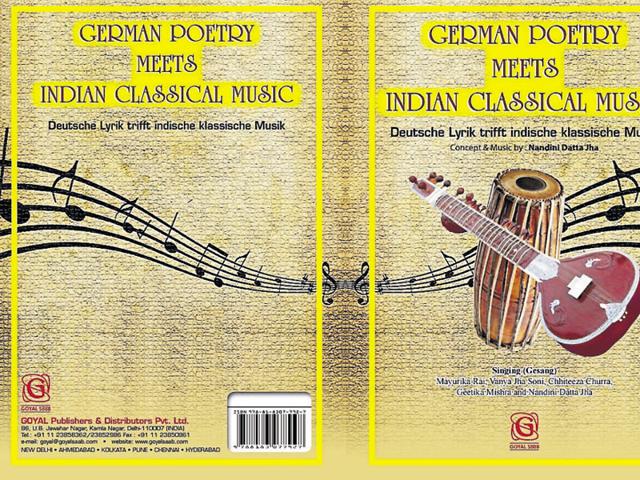Harmonious blend: When German poetry meets Indian classical music
Believing that singing could be an effective way of learning a language, author and music buff Nandini Datta Jha has come up with her second book ‘German Poetry Meets Indian Classical Music’ which was recently released by Goyal Publishers simultaneously in Bhopal and New Delhi.
Believing that singing could be an effective way of learning a language, author and music buff Nandini Datta Jha has come up with her second book ‘German Poetry Meets Indian Classical Music’ which was recently released by Goyal Publishers simultaneously in Bhopal and New Delhi.

While the concept and music has been given by Jha,the singing part has been contributed by Mayurika Rai, Vanya Jha Soni, Chiteeza Churra, Geetika Mishra and Nandini herself.
It is said that music is a language by itself. People from different cultures, speaking different languages, are often bound together solely by their love for music. It was this belief which initiated Jha’s experiment of combining German language words with Indian classical music.
“After having successfully launched my first book in 2014 for learners of German all over India, this book features 10 songs based on different ragas, the lyrics of which comprise 10 German poems, written by German literature greats like Goethe, Heine and Brecht. Also, a CD drive is attached with the book to give a complete sense of words as well as the music,” says Jha.
On being asked about the purpose of writing the book, Jha says, “During my teaching endeavors, I realised that singing could be an effective way of learning a language. We all know that this is how the children at the KG schools all over the world are initiated into a new language. So, I devised this ‘Singlingual method’. Since it is hard to find a person who doesn’t like music, I thought of working on it seriously.”
Each section has contents like a poem, its musical notations, a short note about the poet and about the raag, besides a short language exercise for those who are learning German language. The singers are all amateurs or ‘hobby singers’, who have been Nandini’s students.
When asked how difficult it was to choose German poems, Jha says, “Care was taken to choose poems that are relatively simple in thought and language so that they could be easily comprehensible to learners of the language too. Attempt has also been made to match the mood of the raag to that of the poem.”
About the research she did for the book, she said, “I went to several libraries in Delhi and other cities and read my own literature books which I had bought, but had no time to read till now, for the spade work. The previous collection had all the songs set to ‘Dhrupad’ style, which is the oldest form of Indian classical music, characterised by very slow and stable notes and the use of only two instruments – Pakhavaj and Tanpura.”
“This time, we decided to go beyond Dhrupad. As a result, some of the compositions are a bit faster paced, and several other instruments like sarod, sitar, santoor, guitar, flute, drums and many more have been also used.”



